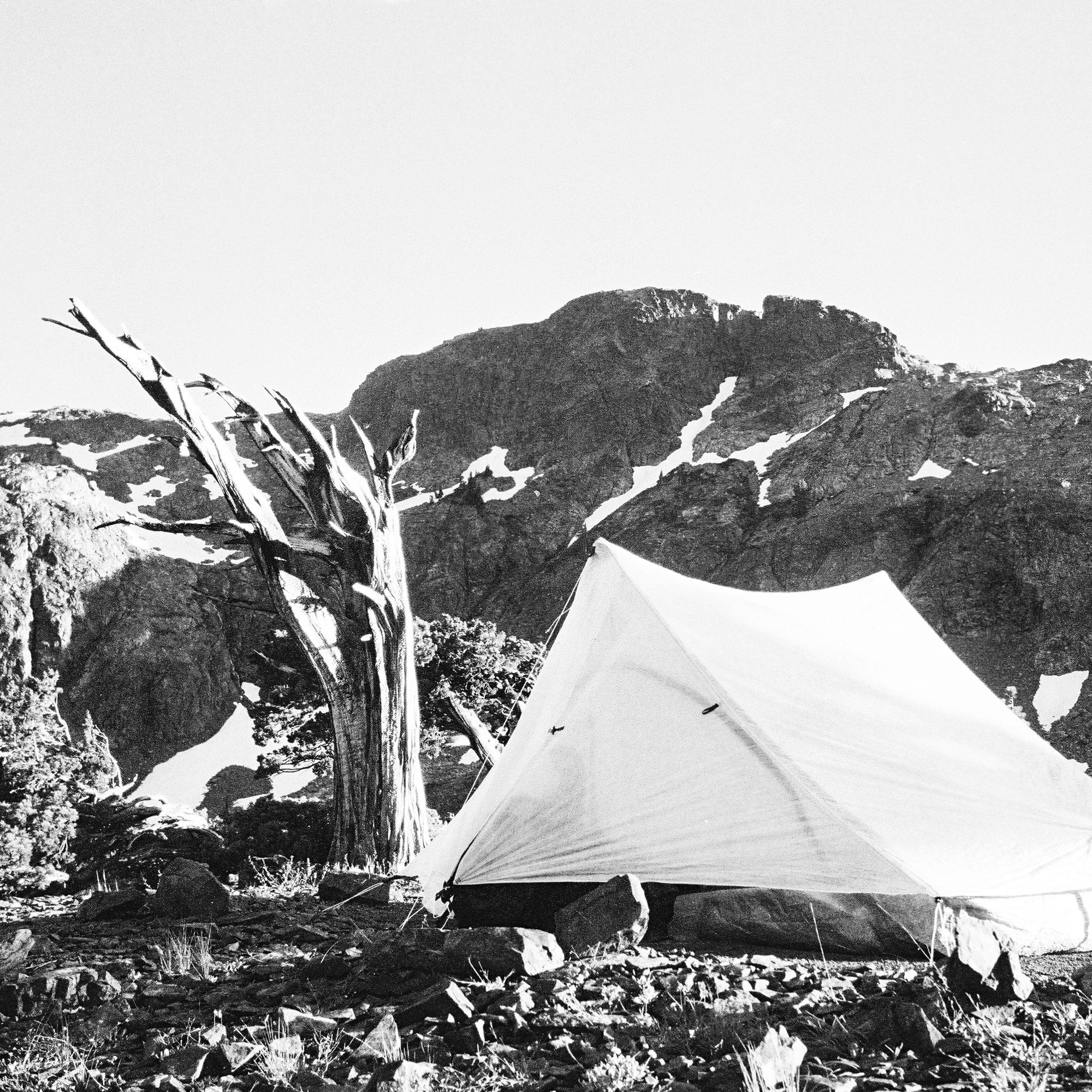Stability basics
Upright canister stoves are a tall mass balanced on a small circle. That narrow base makes it easy to tip a pot when you stir, bump a handle, or cook on uneven ground. The Universal Fuel Stand solves this by widening the base to a 160 mm stance. With a wider base of support, the system’s center of mass stays inside that base during normal use, so the pot is less likely to wobble or spill. Nothing about the flame or fuel changes—the stand simply gives your stove a broader, more predictable foundation.
Soft-ground behavior: why canisters “self-dome”
Most fuel canisters have a concave bottom with a stiff outer rim. On soft surfaces like snow, dry sand, or small gravel, that rim pushes down at the edge and shoves material inward. The ground then rises under the concave center and forms a small dome. The canister ends up perched on its own little mound, so even “flat” ground turns slightly unlevel and tippy. The stand prevents this by holding the canister up on three feet and spreading the load across flatter contact points, which keeps the surface from doming into the bottom of the can. Result: a level, steady base on soft substrates that would otherwise feel sketchy.
Interface and geometry
Canister sizing is fairly uniform, so the stand snaps cleanly onto both 90 mm (small) and 110 mm (large) canister bases—covering the common 110 g / 230 g / 450 g sizes across brands. Once attached, it creates a three-point stance using one wide PA12 foot and two narrower Grade-5 titanium feet. That mix is on purpose: the wide PA12 foot has more surface area and grips well; the titanium feet bite reliably on rock and dirt. On a slope, place the wide PA12 foot downhill to resist sliding and roll-off.
Materials that earn their grams
The main body is a high-temperature nylon chosen to hold its shape near warm stove parts while keeping weight extremely low. The folding legs are Grade-5 titanium (Ti-6Al-4V), valued for very high strength-to-weight and the way thin parts spring back after repeated use. Stainless-steel rivets pin the joints so movement stays smooth and corrosion-resistant. In practice: the polymer keeps geometry stable, the titanium legs handle countless deployments without getting sloppy, and the stainless pivots shrug off grit and weather—all at just 7 g total.
Packability and setup
A patent-pending linkage folds the stand to 85 × 22 × 16 mm, small enough to nest inside most solo pots or cups alongside your stove. The folded shape packs tight and won’t tangle with other kitchen pieces. Setup takes seconds: clip the stand to the canister base, swing the legs out until they stop, then thread on the stove. On uneven ground, aim the wide PA12 foot downhill and cook as usual. You’ll feel the difference the first time you stir a full pot without the usual wobble.
Where it fits—and safe use
This stand is made for standard upright canister stoves mounted directly to 90 mm and 110 mm canisters. It isn’t intended for remote-canister or liquid-fuel systems. Use normal stove safety: keep plastics clear of flame, avoid tight windscreens that trap heat around the canister, use it outdoors (not in a tent or enclosed space), and if anything ever feels loose, give the titanium legs and stainless pivots a quick check before the next boil.
Key facts
Weight: 7 g; Folded size: 85 × 22 × 16 mm; Stability diameter: 160 mm; Canisters: 90 mm & 110 mm bases (covers 110 g / 230 g / 450 g); Construction: high-temperature nylon body, Grade-5 titanium legs, stainless-steel rivets; feet = one wide PA12 + two narrow titanium; Design: patent-pending fold; Soft-ground benefit: stops the concave-base dome effect on snow, sand, and small gravel so the stove stays level.
Stability Comparator
On soft ground, a bare canister’s concave rim can “self-dome” the surface and shrink real contact width. The Igneous stand spreads load with feet, keeping most of its diameter.
Base width fixed by stand: 160 mm. Canister size doesn’t change base width.
Tip-Over Force (F*)
Stability Margin — Angle to Tip (°)
What you’re seeing: The top chart shows the sideways push needed to start tipping (higher is better). The bottom chart shows how far you can lean before tipping (higher is better). With **soft ground** selected, the universal stand’s **160 mm** base keeps most of its width, so the improvement over a **110 mm** canister is larger—and over a **90 mm** canister, larger still.



